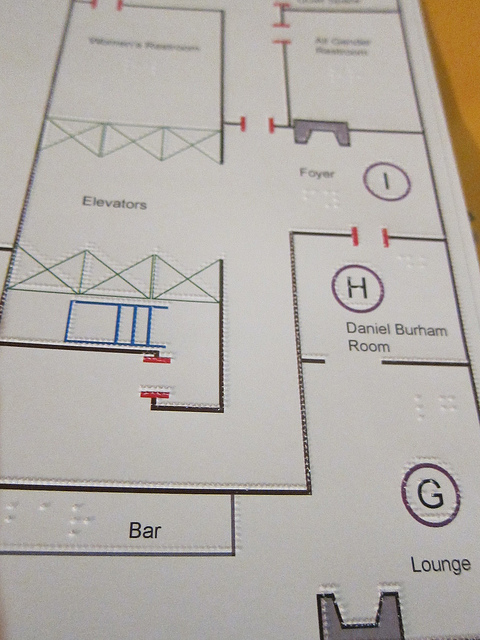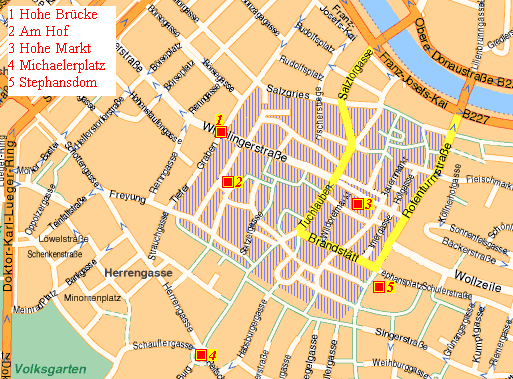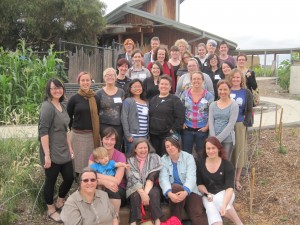At a couple of conferences lately, Hackmeet and She’s Geeky, as well as at the feminist science fiction convention WisCon, I hosted a discussion of feminist hackers and feminist hacking. I wanted to put the idea out into the world and see what other women had to say about it. Though women are involved with Anonymous and other instances of hacker activism, they aren’t part of the story, of the myth of the hacker. If there were a particularly feminist or womanist Anonymous, women working together, what would they be doing? What or who would their targets be? What social justice or mischief making aims would they have? What would our griefing and trolling look like or what does it currently look like? What do hacker feminists do for lulz? What would Hacker Hothead Paisan do? How would our intersectionalities play out? What would a womanist or black women’s perspectives bring, Latina, or First Nations? What would our sisters of the Arab Spring do in their activism if they were to work together and independently as hackers? Would any of this be any different from what’s already happening, or pretty much the same? Simply asking those questions seemed to give people food for thought.
Here are some ideas that came up during these discussions.

– Stuff that’s legal. Comb through existing leaks and data dumps. Highlight and expose info of particular interest to women.
– We can be in it for the lulz. We aren’t always noble social justice peace-warriors engaged in civil discourse. We are also genius tricksters, unruly angry mobs of trolls. Civil discourse can be good in some areas but can work against us and in support of oppression. Some of us like hackery mischief. The genius archetype is also a trickster, a prankster; we are rockstars and geniuses and badass.

– Work with people who want to leak corporate HR data, salary info, sexual harassment data. Like the list of sexist or harassing managers that allegedly circulates among women at IBM through their backchannels.
– Essentially, NameYourRapist.com. Name and shame the perps of anything from sexist comments to harassment and sexual assault. This led to talk of various complicated reputation and voting systems. No one can report these things in public or in private without obviously identifying themselves and getting huge backlash which hurts them more than the accusation hurt the perp. This was a fertile topic of discussion. It leads to extremes of nostril flaring determination and pearl clutching oh-no-what-about-the-menz ethical worries every time I’ve brought it up in public or private. The one thing we could all agree on was that it would need to be hosted somewhere really great in order to deal with the horrendous backlash.
– Hollaback as an example of name (photographic image) and shame. This has particular power dynamics.
– Fan_wank and anon meme style communities, mostly women, definitely in it for the lulz.
– We want actually feminist reddit and stack overflow type of stuff that isn’t fucking taken over by MRAs or mansplaining douchebags.
– The example of the Being Human photographer, the woman from Senegal, and the Orthodox Jewish man. The hollaback was taken down, but feminist blogs, tumbler reblogs, documented the incident and the fallout.
– The example of geekfeminism forking MikeeUSA’s code and putting pink glitter ponies all over it to make fun of him. What other code should we be forking and how?
– Some of the stuff Tiger Beatdown has done, Sady Doyle being awesome with the twitter hashtags, Michael Moore callout, #reasonstobeatyourgirlfriend callouts. Find douchey behavior, document it, then profile the perps and mock the shit out of them. One advantage of doing this is you don’t have to particularly prove something happened since you can source it, it happened in public on the Internet. Though some mentioned the importance of documenting, screencaps, Internet Archive, Google Cache, in case the douchey source is deleted.
– Testimonial. Coming out narratives. For example, there was a campaign among bloggers and social media users in Argentina, where it’s illegal to have an abortion, to put up “I’ve had an abortion” badges or posts.
– Ethical hacking vs. unethical. Feminist white hat, feminist black hat actions. What would our ethical spectrum look like?
– Concerns over the powerful, effective humor of Anon style actions and whether that can bleed over into bullying, harassment which disproportionately affects women or uses misogyny to denigrate people.
– For fuck’s sake at least edit Wikipedia more often and put more notable (to us!) women in there.
– We can perpetrate drama in particular ways that create guerrilla theater online.
– Shit Manarchists Say videos are pretty funny. Could go much further with this sort of thing.
– Games that teach people what it is like to experience oppression. We need more things like that.
– Simply documenting things that happen is powerful. The geekfeminism wiki Timeline of Incidents mentioned often in these discussions as an inspiration and model to follow. It provides continuity, and gives us a history.
– We need backchannel support for whatever we do in public. IRC, pirate/etherpad, are useful.
– Tools for security and privacy as well as for information gathering. Peer support and education to improve our skills.
– (Reading aloud of the main points of the Hacker Ethic) This is an attempt to outline a hacker ethic, which is awesome. But a strong part of actual hacker culture is violence, putting each other down, boasting, making people prove themselves, obnoxiousness, rape culture. You can’t even talk about hacking for a minute without someone going on about ass rape. It keeps us out, and it’s meant to keep us out. We can trash talk and escalate obscenity forever but we don’t necessarily want to become that person. It affects you and it’s not good. If we don’t want to be part of that we have to build something else.
– Riot Grrrl comes up a lot in these discussions, and not just because I was dragging it in. Yay!
– We will write some feminist hacker manifestos.
At WisCon I was part of a somewhat different though oddly convergent discussion about feminism and F/LOSS culture. It was so far beyond the usual unicorn talk that you may not even be able to imagine it. Instead of explaining how we are Women in Tech or Women in Open Source or how to improve gender ratios on open source projects we were just a bunch of women developers talking about our working lives, experiences, and ambitions. Everyone at the discussion was already quite educated so no explanations were necessary. I’ll be looking for for notes from this (mine or someone else’s) to post in more detail. But our basic topic was: F/LOSS and feminism, at least the sorts of feminisms we all meant in that room, share so many important ideals, processes, and methodologies, which is part of what makes us so passionate about F/LOSS; and that seems so obvious to us but isn’t to everyone; how can we bring out this point and bring them together?
I proposed this discussion as a workshop event for 28C3 in Berlin and then heard a very interesting story. Apparently the idea was quite controversial among the conference organizers, with some people pulling for it hard, and others rejecting it because “We don’t have those problems here” and “We have solved the problem of sexism in Germany, in Europe, not like in America” and “Hackers don’t see women or men”. Also that it would be “too divisive” and cause problems at the conference. And, amazingly that there would not be enough interest. I heard from other women (mostly) that the 28C3 culture was a very difficult place to talk about gender and it never got much past the stage of barely being able to assert that as women we might have different experiences than men and that sexism does exist, but even “sexism does exist” was heartily challenged. I then got a (friendly) warning from someone involved with the conference that if against all odds I did go to 28C3 and run this discussion, the backlash on me personally would be very intense and beyond anything I could imagine. Yes, right, that really makes me want to spend a couple of thousand dollars flying to Berlin in the dead of winter with a wheelchair. But I awaited the official response with interest. It was a form letter that the conference was too full to take my proposal, they just had too many proposals that year. Highlarious! I thought it was a shame, because, since it was not particularly my community other than the people who are part of Noisebridge, I could go in guns blazing and make the European feminists look like total moderates. Then a friend of mine offered to give up his keynote speaking slot to me so I could surprise-feminism-bomb the conference. I declined with thanks, touched at his offer.
I had another great conversation privately at WisCon with Elise Matthesen who listened to my elevator pitch of this topic in the Great Dane pub and in response told me a story, which of course is a very WisCon and very feminist thing to do. I don’t remember many of the exact details or people’s names, but the story was about one of the WAMM sort of groups in the 70s or 80s doing direct action chaining themselves to some fence or gate of some munitions company. One of the women in the group was the wife of a local high ranking police or military officer. Before the actions they would do a guided meditation where the facilitator would ask everyone to consider in themselves, could they imagine in their hearts being the head of that munitions factory and waking up that morning and part of himself not wanting to make nuclear warheads that day? Could they imagine him responding positively and openly to the protest, and listening to their concerns? If they couldn’t imagine that and really feel it, they should not come to participate in the direct action that day. Setting aside that space, asking that question, and asking everyone to consider it, made the way the protests went quite different from how they might have gone otherwise. The cops would come and people would cut off the chains from the protestors to drag them away but they were gentle and would do it as a sort of routine, as something that was accepted as part of the action. They were doing their jobs. They would drag people to the vans and bring them coffee and donuts. I can’t tell the story as powerfully as Elise told it, but it was exactly the kind of response I have been figuring I would hear. Some of the difference in hacker ethic between Anon and Womanist Anon or Fem Anon might be an almost internal approach, a different position or posture in relation to the world.
It should be totally clear this is merely an interesting thought experiment and I am not advocating doing anything illegal.
And by the way, for the nicer kind of hacking as in just being a kick ass developer, you might want to take a look at Hacker School!
















